
 Mr. Swapnil Bhowmick
Mr. Swapnil Bhowmick
What is Breastfeeding : Benefits of Breastfeeding for the Baby | Medtalks
What is Breastfeeding | Define Breastfeeding
Breastfeeding is the practice of giving your infant breast milk directly from your breast. It is also referred to as nursing. The decision to breastfeed is a personal one. It's also one that will elicit reactions from friends and relatives.Many medical professionals, notably the American Academy of Pediatrics (AAP) and the American College of Obstetricians and Gynecologists (ACOG), strongly advise solely breastfeeding for 6 months (no formula, juice, or water). Breastfeeding should be continued after the introduction of other meals for the baby's first year of life.
The frequency with which you should nurse your infant is determined by whether your kid likes short, frequent meals or longer feedings. As your child develops, this will alter. Newborns frequently want to be fed every 2-3 hours. By two months, most newborns are feeding every 3-4 hours, and by six months, most babies are feeding every 4-5 hours.
Signs suggesting that Your Child is Hungry | Baby Feeding Mother Milk
Crying is one of the most typical ways your baby will communicate that they are hungry. Other indications that your baby is ready to be fed include:
They are either licking their lips or thrusting out their tongue
Rooting, when someone moves their jaw, mouth, or head to seek for your breast
They are putting their hand in their mouth
They open their mouths
Fussiness
Sucking on something
Benefits of Breastfeeding
Breast milk is the best source of nourishment for babies. It has a nearly ideal balance of vitamins, protein, and fat, providing your kid with everything he or she requires to grow. And it's all in a more readily digestible form than baby formula. Breast milk includes antibodies that aid in the defence of your infant against viruses and germs. Breastfeeding reduces your baby's chances of developing asthma or allergies. Furthermore, newborns who are solely breastfed for the first 6 months, without the use of formula, have fewer ear infections, respiratory diseases, and episodes of diarrhea. They also have fewer hospitalizations and medical visits.Breastfeeding has been related in several studies to higher IQ scores in later life. Furthermore, physical proximity, skin-to-skin caressing, and eye contact all contribute to your infant bonding with you and feeling secure. Breastfed infants are more likely to gain the appropriate amount of weight as they develop as opposed to becoming overweight children. According to the AAP, nursing can also help prevent sudden infant death syndrome (SIDS). It may reduce the risk of diabetes, obesity, and some malignancies, but further study is needed.
Breastfeeding Advantages for Mothers
Breastfeeding burns more calories, which can help you shed pregnancy weight more quickly. It produces the hormone oxytocin, which aids in the restoration of your uterus to its pre-pregnancy size and may decrease uterine bleeding after birth. Breastfeeding also reduces your chance of developing breast and ovarian cancer. It may also reduce your risk of osteoporosis. It saves you time and money because you don't have to buy and measure formulas, sanitize nipples, or reheat bottles. It also allows you to spend regular quiet time with your infant as you connect.
What is ADHD : Causes, Symptoms, Treatment
Will You Produce Enough Milk to Breastfeed?
Your breasts are an excellent source of "first milk" during the first few days after birth. It's referred to as colostrum. Colostrum is thick and yellowish, and there isn't much of it, but there is enough to fulfill your baby's nutritional demands. Colostrum aids in the development and preparation of a newborn's digestive system for the digestion of breast milk.Colostrum is the earliest phase of breast milk that varies over time to provide your kid with the nourishment they require as they develop. The second stage is known as transitional milk. This is done as your colostrum is progressively replaced by the third phase of breast milk, known as mature milk.
A few days after giving birth, you will begin to produce transitional milk. By 10 to 15 days following delivery, you will have produced mature milk, which will provide your baby with all of the nourishment he or she requires.During the first 3 to 5 days after delivery, most infants lose a little bit of weight. This has nothing to do with nursing.
As your baby requires more milk and feeds more frequently, your breasts respond by producing more milk. Breastfeeding exclusively (no formula, juice, or water) for 6 months is recommended by experts. Your breasts may produce less milk if you supplement with formula.Even if you breastfeed for less than the required 6 months, it is preferable to nurse for a limited period of time rather than none at all. You can introduce solid food at 6 months, but you should continue to breastfeed if you want to continue producing milk.
Does your Child get Enough Milk?
Many nursing mothers question if their kids are getting enough milk for proper nourishment. If your infant is receiving adequate breastmilk, he or she should: They should not lose more than 7% of their birth weight in the first few days following delivery. Between feedings, they appear to be content for approximately 1-3 hours. By the time they are 7-10 days old, they should be wearing at least 6 diapers each day that are wet with very pale or clear pee.
What is the Best Breastfeeding Position | Breastfeeding techniques
The optimal position for you is one in which both you and your baby are comfortable and calm, and you don't have to strain to retain the position or continue breastfeeding. Here are some typical nursing positions for your baby:
The cradle position: Place your baby's head in the crook of your elbow, with their entire body facing you. Place your baby's tummy against your body so that they feel completely supported. Your "free" arm can wrap around to support your baby's head and neck, or it might extend between your baby's legs to support the lower back.
Football position: Line your baby's back up with your forearm to cradle your infant like a football, with your palm supporting the head and neck. This is most effective with infants and little babies. It's also an excellent posture if you're recovering after cesarean delivery and need to cushion your tummy from your baby's pressure or weight.
Side-lying position: This posture is ideal for in-bed feedings at night. Side-lying is particularly useful if you're healing from an episiotomy, which is an incision made during labor to enlarge the vaginal opening. To get comfy, place cushions beneath your head. Then, get close to your infant and lift your breast and nipple into your baby's mouth with your free hand. Once your baby has been properly "latched on," use your free hand to hold the head and neck so there is no twisting or straining to continue breastfeeding.
Cross-cradle grip: Sit up straight on a comfy armchair with armrests. Place your baby in the crook of your arm opposite the breast you'll be using to feed them. With your hand, support their head. Bring your infant across your body so that your stomachs are facing each other. Make a U-shaped cup with your other hand around your breast. Bring your baby's lips to your breast and cuddle them close to you without leaning forward.
Position of repose: This posture, also known as biological nurturing, is exactly what it sounds like. It is intended to stimulate your and your baby's natural nursing impulses. On a couch or bed, lean back but not flat. Make sure your head and shoulders are well supported. Hold your infant so that your whole fronts are touching. Allow your baby to sit in whatever posture is comfortable for them as long as their cheek is close to your breast. If your infant requires assistance latching on, provide it.
How to Help Your Baby 'Latch On' while Breastfeeding
Position your baby so that they are comfortable and do not have to twist their neck to feed. Cup your breast with one hand and softly brush your baby's bottom lip with your nipple. Your baby's natural response will be to open his or her mouth wide. Bring your mouth closer around your nipple, aiming to center your nipple in the mouth above the tongue, with your hand supporting your baby's neck.
You'll know your baby is "latched on" correctly when both lips are pursed outward around your nipple. Your infant should have all of your nipple and most of the areola, which is the darker skin around your nipple, in their mouth. While you may feel a slight tingling or tugging, breastfeeding should not be painful.
If your baby isn't latched on correctly and nursing with a smooth, comfortable rhythm, gently nudge your pinky between your baby's gums to break the suction, remove your nipple, and try again. Good "latching on" helps prevent sore nipples.
Tips for New Breastfeeding Moms
Some things help you prepare for breastfeeding. These are:
Prenatal care should be obtained on a regular basis to assist you to prevent having a premature baby.
Inform your doctor that you intend to breastfeed and inquire about the assistance available at the institution where you intend to give birth to help you nurse after birth.
Consider taking a breastfeeding class.
Ask your doctor to put you in touch with a lactation consultant, who can educate you on the fundamentals of nursing and assist you if you run into problems.
Discuss with your doctor any medical problems you may have or medicines you are taking that may interfere with breastfeeding.
The following recommendations, known as the ABCs of breastfeeding, can assist you and your baby in becoming acquainted with the process:
- Awareness: Keep an eye out for your baby's hunger cues and nurse whenever he or she is hungry. This is known as "on-demand" feeding. During the first few weeks, you may need to nurse eight to twelve times per 24 hours. Hungry babies reach their hands to their lips, make sucking noises or mouth movements, or move for your breast. Don't sit around waiting for your baby to cry. That's an indication they're too hungry.
- Please be patient: Breastfeed your kid for as long as he or she wants to breastfeed each time. Feedings should not be rushed for your infant. Typically, infants nurse for 10 to 20 minutes on each breast.
- Comfort: This is critical. When you are relaxed when nursing, your milk is more likely to "let down" and flow. Before you begin to breastfeed, make yourself comfortable by using cushions to support your arms, head, and neck, as well as a footrest to support your feet and legs.
Are there any Medical Concerns with Breastfeeding?
Breastfeeding can be harmful to an infant in a few circumstances. The following are some reasons why you should not breastfeed:
You have been diagnosed with HIV. Breast milk can transmit the HIV infection to your child.
You have active TB that is untreated.
You're undergoing chemotherapy to treat cancer.
You're abusing an illicit substance like cocaine or marijuana.
Your infant has galactosemia, an uncommon disease in which he or she cannot handle the natural sugar galactose found in breast milk.
You're taking prescription medicines, such as those used to treat migraines, Parkinson's disease, or arthritis.
If you are on any prescription medicines, see your doctor before beginning to breastfeed. Based on your medicine, your doctor can assist you in making an educated selection.
You should be able to breastfeed even if you have a cold or the flu. Breast milk will not infect your infant and may even provide antibodies to assist your baby battle the sickness. Additionally, the AAP recommends that exclusively breastfed newborns and infants who are partly breastfed get more than half of their daily feedings through human milk if supplemented with oral iron beginning at 4 months of age. This should be done until iron-fortified foods, such as iron-fortified cereals, are added to the diet. The American Academy of Pediatrics advises that all children be tested for iron levels at the age of one.
What are some Common Breastfeeding Obstacles?
Sore Nipples
In the first few weeks of nursing, you should expect some pain. Make sure your baby latches on properly, and after each feeding, use one finger to break the suction in your baby's mouth. This will aid in the prevention of painful nipples. If you're still painful, make sure you're nursing with each breast long enough to clear the milk ducts. If you don't, your breasts might swell, get engorged, and become painful. Holding ice or a bag of frozen peas on painful nipples might provide some relief. Keeping your nipples dry and allowing them to "air dry" between feedings is also beneficial. At first, your baby will suck more aggressively. So, begin with less sore nipples.
Dry Nipples
To prevent your nipples from becoming dry and cracked, avoid alcohol-containing soaps, fragrances, and lotions.
Inverted Nipples
When you pinch the areola, the black skin around the nipple, an inverted nipple does not poke forward. Breast milk can be used safely within 2 days if kept in the refrigerator for up to 6 months.
Breast Enlargement
It means the blood vessels in your breast have become congested. A single sore spot on your breast, which may be red and hot, can signal a plugged milk duct. Being overly anxious or stressed can interfere with your body's natural release of milk into the milk ducts.
Where Can I Get Breastfeeding Support?
Images of moms nursing their kids make it appear straightforward, but some women require assistance and instruction. It can come from a nurse, doctor, family member, or friend, and it helps moms overcome potential roadblocks.
If you have any questions, reach out to friends, family, and your doctor. Most likely, the ladies in your life have had similar concerns.
FAQ's Breast Feeding
Q1. How long does the average mom breastfeed?
Answer - How often you should breastfeed your baby depends on whether your baby prefers small, frequent meals or longer feedings. As your baby grows, you will see a change in this. Babies want to be fed every 2 hours. Babies are usually fed every 4-5 hours by 6 months.
Q2. Breastfeeding and Sleep?
Answer - The person is comfortable. This is the most important one. Your milk is more likely to "let down" if you relax while breastfeeding. Before you begin to feed your baby, make sure you have pillows and a footrest that will support your feet and legs.
Q3. When is the best time to stop breastfeeding a baby?
Answer- After six months of age, breastfeeding is recommended. If both the mother and child wish, babies should be breastfed for at least a year.
Benefits of Breastfeeding In Hindi

Mr. Swapnil Bhowmick
A motivated student of Medicine & Surgery (MBBS) at R. G. Kar Medical College & Hospital, Kolkata, having a knack for reading and composing medical literature. When he's not writing content for MEDtalks, Swapnil is usually looking up the latest trends and innovations in Medicine.


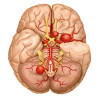
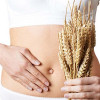

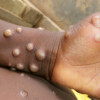
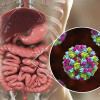


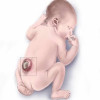



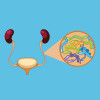



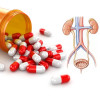


Please login to comment on this article